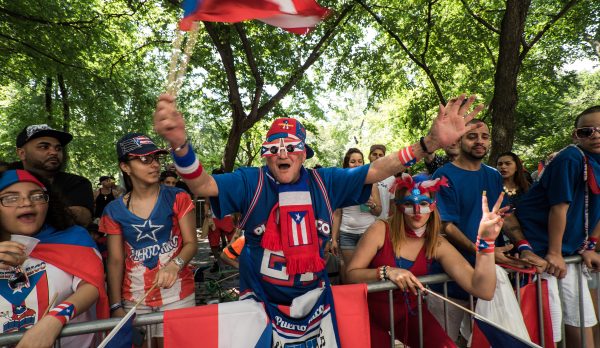

Puerto Ricans celebrating on fifth avenue. Photo by Melvin Audaz @audaz.productions
Holding Puerto Rican flags, wearing hats that say “Puerto Rico” and chanting “Puerto Rico Libre (Free Puerto Rico)” or “Sí, a la estadidad (Yes to statehood),” just over one million Puerto Ricans and other Latinos gathered around Fifth Avenue to celebrate the 60th annual National Puerto Rican Day parade on Sunday.
“This is my culture, this is who we are. I’m proud,” said Aracelis González, while she was dancing and waving the Puerto Rican flag. From Vega Baja, Puerto Rico, Gonzalez came to the parade with her son Jay for the first time after 18 years.
On the the same day, Puerto Ricans on the island were deciding their future in a much-criticized plebiscite, choosing whether it should become the 51st state of the United States, independent or remain a commonwealth.
Puerto Ricans weren’t the only ones who joined this historical event. Many Latinos also felt it was important to be part of this event as a reminder of what the Puerto Rican community means for this country.
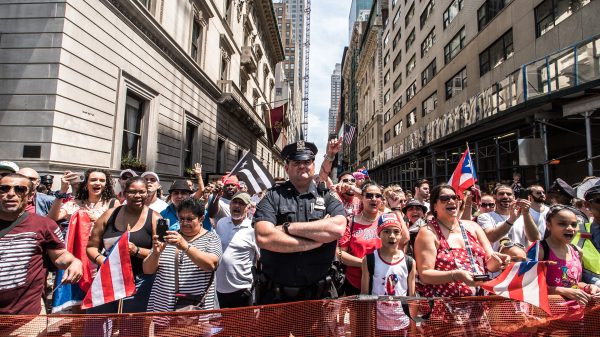

Crowds at 2017 NY Puerto Rican Parade on Fifth Avenue. Photo by Melvin Audaz
“It does not matter if you are Puerto Rican or not. We are all Latinos. I want to be closer to my Hispanic community,” said Argelis Alvayero, 26, a Bronx native, whose family is from Dominican Republic and Ek Salvador. Alvayero wearing his Salvadoran soccer jersey came with his Puerto Rican friends to celebrate.
Close to 11:30 a.m., the first float approached 44th Street, where the parade began and the music started taking over Fifth Avenue.
The high summer temperatures were not an obstacle for Boricuas to attend and to participate in the parade.
However, the turnout was less than last year’s parade. One of the reasons was the controversy behind the participation of Oscar López Rivera, an activist and militant of the Fuerzas Armadas de Liberación Nacional (FALN), who was in prison for 35 years. The FALN has been responsible for 120 bomb attacks around the U.S during the 1970’s and early 1980’s.
Many Americans call López Rivera a hero, and others see him as a terrorist.
As the first float started moving north on Fifth Avenue, a van arrived next to the float that López Rivera hopped on to lead the parade. Advocacy groups holding big banners in support of López Rivera followed the float.
“This float was designed thinking of Oscar. He says that what he missed the most while being in prison was the sea,” said Jose Morales a.k.a “Fofito,” who was behind the creation of the float.
The blue float looked like the sea. It was made by “Poncili Creación,” a group of artists that builds sculptures using recyclable materials.
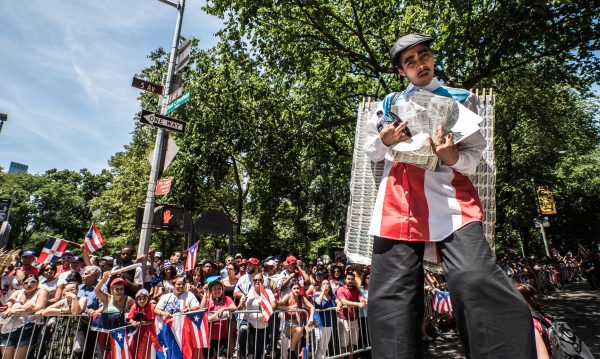

Woman artist dressed as a lotería man. Photo by Melvin Audaz
Many advocate and artist groups participated as well to showcase their performances, sending different messages. Some of the groups included:
- Omar Dance: With their bright light blue dresses, this group of girls between the ages of 8 to 18 danced to salsa.
- Defend Puerto Rico: Using Puerto Rico’s flags and shirts in black and white, this group showed messages of resistance to the current situation of the island. Some of their banners said “People before debt; Independence Now! Ni Junta, Ni Colonia (No Junta, No Colony).”
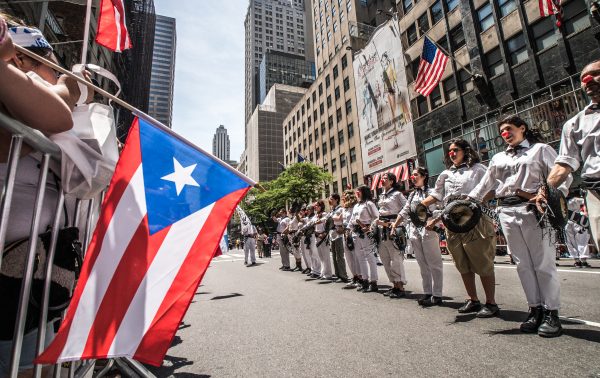

Pelotón Jíbaros en Resistencia in front of the crowd. Photo by Melvin Audaz
- Pelotón Jíbaros en Resistencia or Jibaros Platoon in Resistence: This group of artists from Puerto Rico and its Diaspora in New York dressed like Jíbaros, a symbolic figure of Puerto Rican history and culture, to showcase their street performance. They were holding machetes with messages like “Libertad, education, democracy and peace”.
The López Rivera controversy led to some parade sponsors and elected officials to drop their participation. Goya, JetBlue, Coca-Cola and Governor Andrew Cuomo were among them.
Many others showed support for the controversial figure.
“We need a space to tell people who we are as Boricuas because we are not spics, we are not poor ugly people or troublemakers, or criminals. We are people fighting for 118 years so the United States can get out of our land. We are not going to lose our land,” said Mili Bonilla, who joined the parade. Bonilla is part of the 35 women for Oscar, a group that organized different events in support of López Rivera.
New York City Council Speaker Melissa Mark-Viverito was one of the elected officials who showed support for López Rivera. At one point, she joined Oscar on his float. Later on, she walked on Fifth Avenue, shaking hands and taking picture with people.
By 3 p.m, the floats and different groups who participated approached the end of the parade on 76th Street.
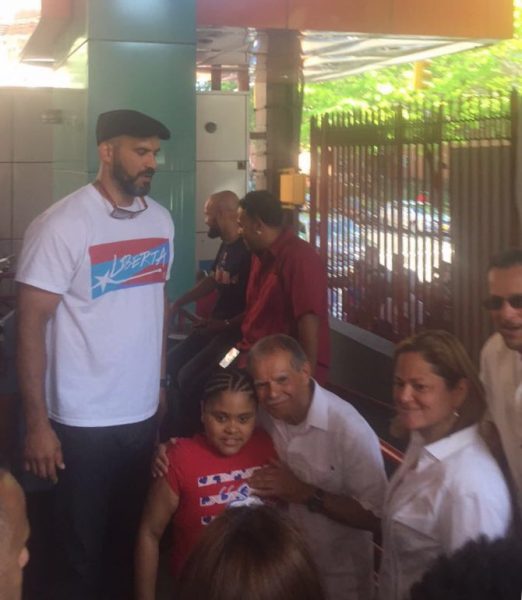

Oscar López Rivera with supporters at La Marqueta. Photo by Maria Camila Montañez
After the parade, López Rivera and Mark-Viverito headed to La Marqueta, an outdoor market place on 116th and Park Avenue, a venue very special to the Puerto Rican community. There, López Rivera met with supporters.
“We have to put our differences aside and we are going to decolonize our island. We have to come together to move forward. Puerto Rico has the potential to become independent. We have the natural resources. We have the power. But first we need to come together,” said López Rivera, as Mark-Viverito stood next to him and many chanted in support.
“I am proud that we’ve been doing this for 60 years. I hope it continues for another 60 years,” said Aracelis, who went to see Lopez Rivera at La Marqueta after the parade.
***
María Camila Montañez is a journalism student at CUNY Graduate School of Journalism’s Spanish-language program. She is originally from Colombia and tweets from @mariacmontanez.


